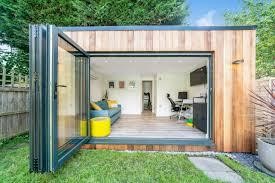Whether starting a new garden or refreshing an existing one, choosing the right plants is essential. The wrong plants will not bring the benefit you hope for and may even be a disaster.
Choosing well-suited plants to your soil and environmental conditions will ensure they thrive and require less maintenance. Consider the following factors when selecting plants for your garden:
Seasonal Appearance
The first thing to consider when choosing the right plants for your garden is how they will look at different times of the year. Adding perennial flowers that bloom throughout the summer and plants with interesting seed heads or berries for winter interest can make a garden stand out. Also, varying the height of plants within a row adds movement and depth to the plantings.
Remember to choose plants that will grow well in your climate zone. While it can be tempting to buy exotic plants from local nurseries or big box stores, they may not be able to thrive in your garden. This can be frustrating for new gardeners who want a beautiful landscape that is easy to maintain.
Whenever possible, choose perennial flowers, shrubs, and trees. These will come back each year, saving you time and money from having to re-plant annuals. Similarly, try to avoid buying plants that will become leggy. Leggy plants have stretched stems and tend to have fewer blooms.
Climate
You know your climate conditions and the gardening zones you live in, so you must choose plants suited to those conditions. The right plant, in the right place, will help you decrease your work and maintenance efforts.
Many new gardeners make the mistake of choosing exotic and interesting plants that may not thrive in their gardens. Choosing plants at a garden center native to your area is always a good idea, as they will be well-suited to the temperatures and precipitation of your climate.
Consider how much sun and shade your landscape gets. Having the right plants for your yard’s sunlight will help limit any extra watering you need. For shady areas, some great choices include ferns and hellebores, while lilacs, hydrangeas, and other perennials need full sun to thrive. In addition, avoid choosing invasive varieties, as they can be difficult to eliminate once established.
Pest and Disease Resistance
Every gardener wants healthy plants that produce nutritious, good-tasting food. Selecting varieties based on days to maturity, plant characteristics, disease resistance, and local adaptability is an important part of that effort.
Choosing plants with the right sun requirements is important to avoid diseases. Shade plants require less than 4 hours of direct sunlight daily, while full-sun plants need more than 6 hours.
Many plant pathogens (fungi, viruses, and bacteria that cause disease) have very broad host ranges. They can easily spread from one site to another by wind or workers carrying infected plant material or through water. Examples are Botrytis, some bacterial diseases like Erwinia and Rhizoctonia, and powdery mildews.
Some plant pathogens are easier to contain than others. For example, some fungi can be contained with a simple fungicide spray. Others have a much more difficult time being controlled with a chemical, such as rust and leaf spots.
Maintenance
The right plant in the right place may seem obvious, but it’s a key consideration many gardeners overlook. Proper plant selection in a local garden center increases the chance that your plants will thrive once established and saves you time and money by reducing the need for chemical treatment.
Consider sun exposure, soil type, and maintenance needs when choosing plants for your garden. Carefully read the information on a plant’s tag, paying attention to its hardiness zone and other specific needs. For example, it’s best to group plants that require the same amount of water together – that way, you can water them all at once rather than one at a time.
Take visitors into consideration as well, especially if you have pets or other wildlife that might be interested in eating or digging up your plants. Selecting deer-resistant and pest-resistant species can help prevent the loss of valuable garden plants. Invasive species should also be avoided as they can quickly spread and overwhelm native ecosystems.




